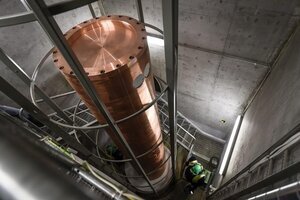
As the world continues to grapple with excessive waste in many fields and fronts, the nuclear industry is still working on finding a permanent location for the long term wastes it creates. The need for safe, secure and long term storage of nuclear waste is one of the leading problems for the industry since energy demands are projected to continue to grow massively, which means so will the waste. In the United States alone, there is roughly 80,000 metric tonnes of spent nuclear fuel waste spread out over 60 dry cask storage sites waiting to be permanently disposed of. The project we investigated proposes a solution to help international inspectors maintain knowledge and prevent the possible proliferation of nuclear material into weapons. This solution involves an integrated system of sensors and tracking technology around a spent fuel canister that involves a scintillating mesh that is wrapped around the canister, weight sensors implemented into the local backfill media, RFID trackers embedded to the canister and ground penetrating radar that will be used in conjunction with an automated robotic system to monitor the canister emplacement. This integrated system was considered to meet the design objectives of being cheap, easy to implement in mass and could be automated to function without the need for a human operator anywhere in the repository setting.
Additionally, this project looked at the issues of radiation emitted from the spent fuel in the canister entering into the surrounding backfill media. These issues culminate into an overarching radiation transport question called the Deep Penetration Problem. As a group, we worked to provide more insight into this area of unknown by modeling the canister with the Monte Carlo N-Particle (MCNP) radiation transport code. The canister was surrounded in a bentonite backfill media as it would be when it is finally disposed of and modeled with the most probable gamma photon energies that would be expected for the spent fuel. This gave us insight that the bentonite buffer does in fact shield the local environment from the damaging effects of radiation. We hope to implement our findings in conjunction with our safeguards design to further improve the safety margins of deep geologic repositories for decades to come.

